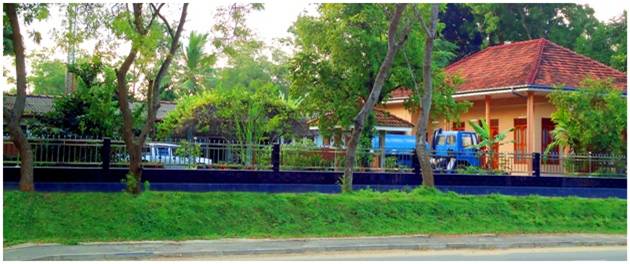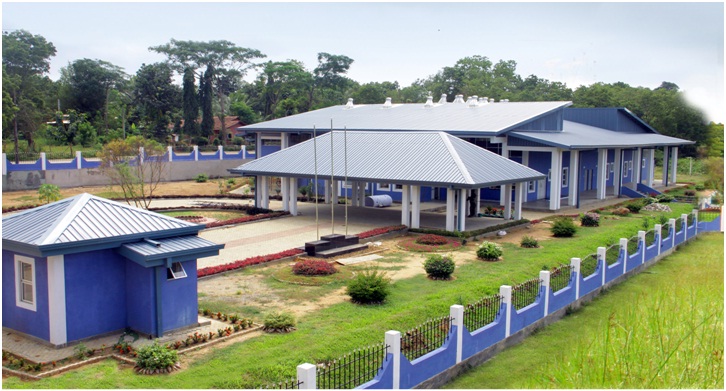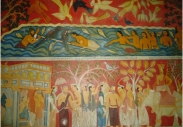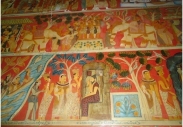Historic Kasagala Rajamaha Vihara.
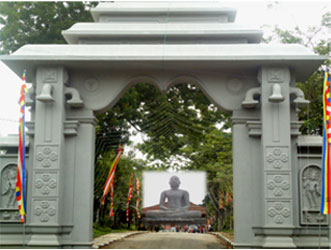
Kasagala Rajamaha Vihara which is belonged to the area of Angunakolapalessa Pradeshiya Sabha is situated about 9.6 km. away from Ranna junction of Weeraketiya – Ranna road. This temple has been constructed in the era of Anuradhapura and ruled by various kings. The temple possesses a land area containing in extent about Five thousand acres. This name of the temple “Kasagala” was created due to drying robes of the monks on stones. Almost everywhere in the temple granite can be seen.
This temple have relationships to Tangalle temple, Kirivehera and Kahandawa ancient temple which belong to Ruhunu Giruwapattu. Several importance evidences have been found in the process of archeological activities. All archeological purposes related to ancient statues and places are done by the Department of Archeology.
Historical status of Kasagala Rajamaha Vihara.
It is believed that beginning of Kasagala Rajamaha Vihara started with the planting sacred Bo tree “Dethispalaruha” with the sponsorship of King Devanam Piyatissa in the third century D.C. It is further mentioned that high spiritual Buddhist monks and Tooth Relics were placed in this temple. King Kavantissa has constructed several buildings there and later King 1st Appula and 1st Wijayabahu rehabilitated such buildings.
A gold Buddha Statue was presented to this temple by King Keerthi Sri Rajasinghe ( 1747 AD – 1780 AD) and during this period the Dalada Perahera had been continuously conducted. About one thousand acre land area was granted to this temple by the King as a Nindagama and this resulted in the temple being considered as a main temple or Raja Maha Viharaya. This temple located in the Giruwapattu East is considered the most Prominent temple amongst other temples in the area. The architect of the present renaissance of this temple is Ven. Wehelle Dhammadinna Thero of the Siyam sect.
Kasagala Paintings
Both sculptures and paintings of Southern artists of Kandyan Tradition which display unique artistic expressions are found inside the three part shrine of this temple. One can identify two styles of paintings here namely Southern style and transition style. Paintings in the access doorway represent the Lord Buddha’s character. These paintings belonging to the southern tradition reveal a lot about temple paintings when lines, colors and shapes of paintings are taken in to consideration. The paintings and Buddha Images seen in the Garbagruhaya and Guard Images, traditional picture decorations and paintings & Jataka Stories seen near access doorway and Pradakshinapathaya (space for worshiping) represent the southern style of Kandy Tradition. These paintings have been influenced by Uropean Cultural traits and new art styles.
Architecture
Outer wall
Outer wall which has been constructed so that sacred building complex is protected is 236 feet in length while 402 feet in width and 5 ½ feet in height. Two gates are on the West and East. Stupa can be seen on North-East. Outer walls of this type are considered specific in the Buddhist architecture.

Stupa
In the site of this temple, there are two Stupa which enhance the historic and archeological value of Kasagala Temple. One of them is situated on a hilly place. Another Stupa ic believed to have been constructed by King Saddhatissa – brother of King Dutugemunu.
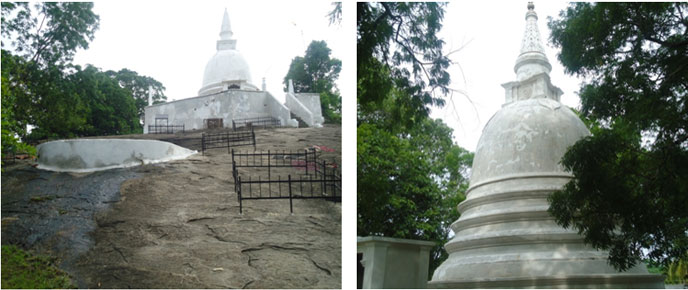
Ancient sacred Bo tree
Constructing outer wall in order to protect the sacred Bo tree is a prominent feature in Buddhist architecture. The outer wall constructed with materials such as stones, bricks and lime plaster has a long history. Ancient rock pillars are believed to have been irected by King Devanam Piyatissa.


